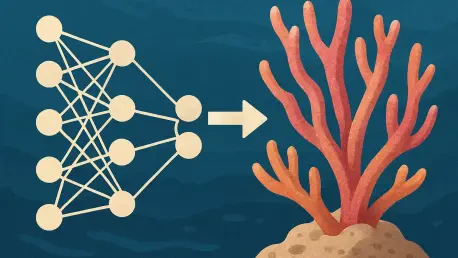In the vast and dynamic realm of marine engineering, ensuring the stability of offshore structures is a challenge that demands innovative solutions and precise predictions. Marine Coral Sand-Clay Mixtures (MCCM), widely used as fill materials in such projects, play a critical role in maintaining structural integrity under harsh oceanic conditions. The strength of these mixtures can make or break the safety and longevity of constructions like breakwaters and artificial islands. Recent advancements in technology have paved the way for groundbreaking approaches to predict MCCM strength, leveraging the power of machine learning to analyze complex data and deliver accurate insights. This development marks a significant shift from traditional methods, offering engineers tools that blend experimental rigor with computational intelligence to tackle real-world problems in marine geotechnical applications.
Unveiling the Science Behind MCCM Strength
Exploring Experimental Foundations
Understanding the mechanical behavior of Marine Coral Sand-Clay Mixtures begins with meticulous experimental testing, a cornerstone of recent research in marine engineering. Triaxial shear tests have been conducted to examine how variables such as clay content, water content, confining pressure, reinforcement layers, and strain impact the strength of MCCM. These experiments have produced a comprehensive dataset that captures the intricate interplay of factors under diverse conditions. Such data serves as the bedrock for predictive modeling, providing a reliable foundation to simulate real-world scenarios. The significance of this approach lies in its ability to reveal patterns and dependencies that might otherwise remain hidden, allowing for a deeper grasp of how MCCM responds to stress and environmental challenges. This experimental framework not only validates theoretical assumptions but also sets the stage for integrating advanced analytical tools to enhance prediction accuracy in practical settings.
Key Factors Shaping Material Performance
Beyond the experimental data, sensitivity analysis has identified critical parameters that predominantly influence the strength of Marine Coral Sand-Clay Mixtures. Water content, clay content, and confining pressure stand out as the most impactful factors, each playing a unique role in determining how the material withstands external forces. High water content, for instance, can reduce cohesion, while varying clay content alters the mixture’s overall stability under load. Confining pressure further complicates the equation by affecting how the material compacts and resists deformation. Recognizing these dominant influences enables engineers to prioritize control over specific conditions during design and construction phases. This insight is invaluable for optimizing MCCM performance in offshore projects, ensuring that structures remain robust against the unpredictable forces of the marine environment. Such findings underscore the need for tailored strategies that address these variables systematically.
Harnessing Machine Learning for Predictive Power
Cutting-Edge Models in Action
The integration of machine learning into marine geotechnical engineering has revolutionized the ability to predict the strength of Marine Coral Sand-Clay Mixtures with unprecedented precision. Several advanced models, including the Backpropagation Neural Network (BPNN), Genetic Algorithm optimized BPNN (GA-BPNN), Particle Swarm Optimization enhanced BPNN (PSO-BPNN), and Logical Development Algorithm preprocessed BPNN (LDA-BPNN), have been developed to analyze experimental data. Among these, the LDA-BPNN model has emerged as a standout, demonstrating superior accuracy and adaptability across varying conditions. Its ability to preprocess data effectively sets it apart from traditional optimization techniques, ensuring that predictions align closely with actual outcomes. This technological leap highlights how machine learning can transform raw data into actionable insights, providing a robust tool for engineers to anticipate MCCM behavior in complex marine settings.
Bridging Theory and Practical Application
Taking machine learning predictions beyond theoretical exercises, recent studies have derived an explicit empirical formula from the LDA-BPNN model to simplify strength prediction for Marine Coral Sand-Clay Mixtures. This formula offers a practical solution for engineers who may not have deep expertise in computational modeling, allowing them to estimate material strength efficiently without navigating intricate algorithms. The accessibility of this tool democratizes advanced research findings, making them applicable in real-world offshore engineering projects where time and resources are often constrained. By bridging the gap between sophisticated technology and everyday practice, this approach enhances decision-making processes, ensuring safer and more efficient designs. The development of such user-friendly tools reflects a broader trend in engineering toward integrating cutting-edge science with practical utility, ultimately fostering innovation in how marine structures are planned and executed.
Reflecting on Transformative Insights
Lessons from a Data-Driven Journey
Looking back, the journey to predict the strength of Marine Coral Sand-Clay Mixtures through experimental testing and machine learning unfolded as a meticulous blend of science and innovation. Triaxial shear tests laid a solid groundwork, capturing the nuances of material behavior under varied conditions, while sensitivity analyses pinpointed water content, clay content, and confining pressure as pivotal elements. These efforts illuminated the path for engineers to refine their approaches to offshore construction. Simultaneously, the emergence of machine learning models like LDA-BPNN showcased how technology could elevate prediction accuracy to new heights. Each step in this process contributed to a deeper understanding of MCCM, ensuring that theoretical insights translated into tangible benefits for marine geotechnical applications. The commitment to rigorous data collection and analysis proved instrumental in shaping safer, more reliable marine structures.
Future Pathways for Engineering Excellence
As this exploration concluded, it became evident that the fusion of experimental data and machine learning had set a powerful precedent for future advancements in marine engineering. The empirical formula derived from sophisticated models offered a glimpse into how accessible tools could empower practitioners to predict MCCM strength with ease. Moving forward, continued research should focus on expanding datasets to cover even more diverse conditions and refining algorithms to enhance predictive capabilities. Collaboration between technologists and field engineers will be key to ensuring that these innovations remain grounded in practical needs. Additionally, exploring how these models adapt to emerging environmental challenges could further solidify their relevance. This past endeavor serves as a call to action for the industry to embrace data-driven solutions, paving the way for safer and more sustainable offshore projects in the years ahead.









